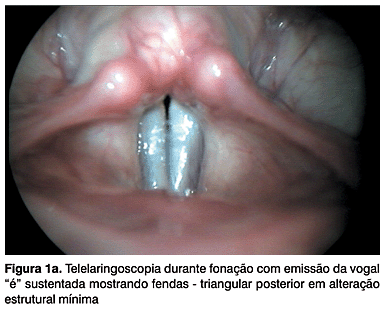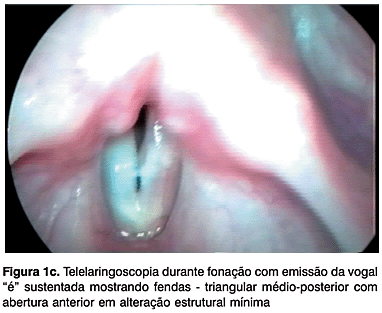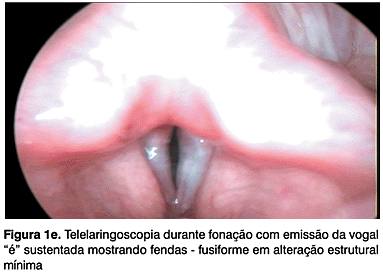The glottal closure varies during phonation, even in subjects who bears no vocal complaints and no alterations on medical examination, according to age, sex, vocal register, fundamental frequency, tension and lesions. There has been noticed complete or incomplete junction of the vocal fold free boarder; when incomplete there are formation of chinks presenting different formats. AIM: Our point is to find in the glottal coaptation mode, during sustained phonation of the vowel /epsilon/, in children having minor structural alterations, components that allow us to set them apart from subjects having vocal nodule or from subjects presenting no vocal complaints. MATERIAL AND METHOD: We have used a retrospective study of children's data assisted from 1996 to 2001, composed of children's larynx images that presented diagnosis of minor structural alterations, vocal nodule and also of children not showing any vocal complaints. From these images there has been analyzed the glottal configuration during phonation of the vowel /epsilon/ and there has been realized statistical analysis to compare the three groups. RESULTS:The triangular chinks are found in the three groups, while the spindle chink only occurred in minor structural alterations. CONCLUSION: The use of glottal coaptation mode in children as a diagnosis criterion to set the minimal structural alteration apart from the vocal nodule and regular larynx is important when we observe spindle chink, a situation found only in the minimal structural alterations. The triangular chinks were not meaningful to differentiate minimal structural alterations from vocal nodule and from regular larynx.
dysphonia; vocal fold; glottal closure







